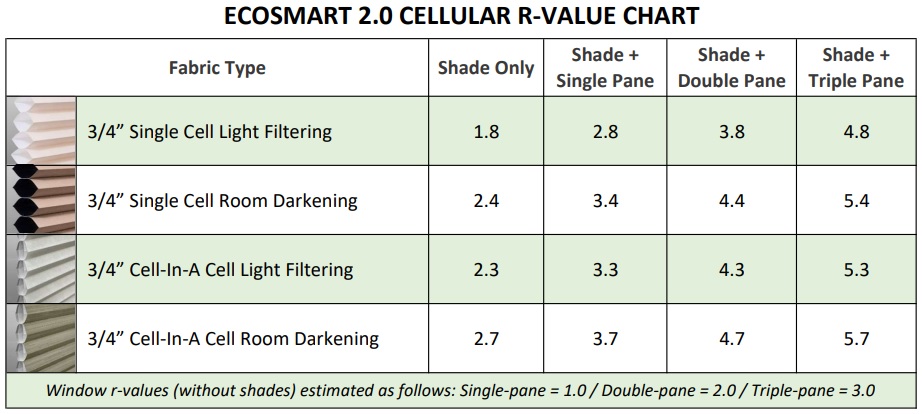No, you’re not imagining that increase in your energy bill during the warmest and coldest parts of the year– it’s real, and how well your windows are insulated plays a big part in it. In fact, up to 30% of your heating and cooling energy could be flying right out your windows!
As a result, homeowners are often faced with the dilemma of whether or not to replace outdated or inefficient windows to protect their space– and their energy bills– from the elements. However, what many people don’t consider are the benefits that insulating shades can have on improving energy efficiency as well. In fact, did you know that adding an EcoSmart cellular shade to a single-pane window provides more insulation than upgrading the window to double-pane? It’s true.
Below, we’ll discuss the benefits of replacing windows vs. insulating shades: which option is right for you?
Understanding Heat Flow in Homes
Before diving into the specifics of windows and shades, it’s important to understand how heat flows in a home. Heat transfer occurs through three main mechanisms: conduction, convection, and radiation. Windows, with their large glass surfaces, are particularly susceptible to all three types of heat transfer, leading to energy loss. This is especially true in older or poorly insulated homes.
The images below show the impact that insulation (in the form of cellular shades) has on a Northern Vermont home during one of the coldest months of the year. The simple addition of a cellular shade was able to increase the temperature of the window by a whopping 33.5 degrees! How cool is that?

Replacing Windows
Replacing windows involves removing the existing window units and installing new ones. This can include upgrading to double-pane or triple-pane windows, which, as you might have guessed from their names, are more energy-efficient. Low-E (low-emissivity) glass is another popular choice, as it has a special coating that reflects heat while allowing light to pass through.
While upgrading your windows to a more efficient model will certainly have the desired effect on your home’s energy efficiency, there are a few drawbacks, including pricing and the amount of time it takes to install a new window. As you might imagine, upgrading your windows can be an expensive undertaking, averaging around $900 per window.
Adding Insulating Shades
Insulating shades are window treatments designed to reduce heat transfer. At EcoSmart, our most popular type of insulating shade is a cellular shade: shades specially configured with polyester fabric that forms air pockets (cells), trapping heat and cold. When surrounded by the right material, air pockets are a tremendous insulator. In fact, that’s how most insulation works!
While we might be biased, we’re big fans of cellular shades because they’re much more affordable than replacing windows, and most shades can be installed by homeowners at their convenience.
At EcoSmart, we offer a variety of styles of cellular shade, including light-filtering, blackout, motorized, top-down/bottom-up, and much more.
Combining Windows With Cellular Shades
Another option for those looking to maximize on their R-value, or how well a material reduces energy (heat) gain or loss, is to combine cellular shades with an energy efficient window. The chart below shows the R-value of each type of shade alone, and the combined R-values of our shades with various types of windows. Pretty cool, huh?

At EcoSmart Shades, we’re proud of the value that our shades add to the home– whether it’s style, privacy, or increased energy efficiency. With questions about which style of shade is right for you, be sure to get in touch with our team of Shade Gurus for recommendations tailored to the unique needs of your space.
